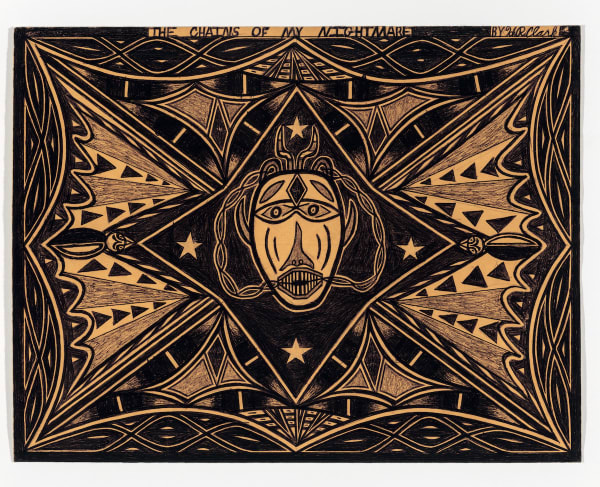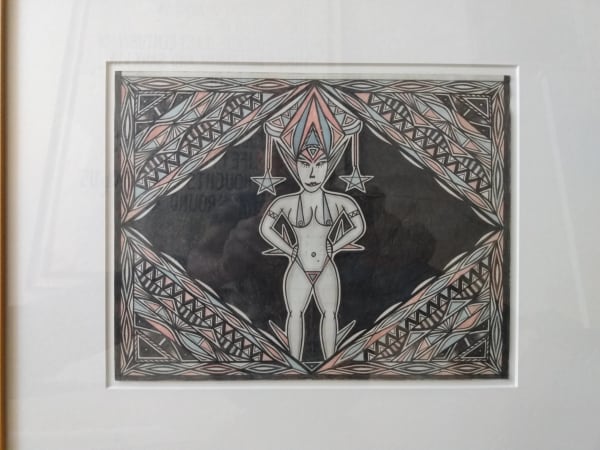Henry Ray Clark American, 1936-2006
Henry Ray Clark, born in Bartlett, Texas, in 1936, moved to Houston when he was a boy. Handsome, with deep blue eyes, he came to be known on the streets of Houston as "Pretty Boy" and then "The Magnificent Pretty Boy," either by himself or by one of the many women who knew him.
Clark's life of drug dealing, pimping, and other hustles always left him feeling like the next score would set him up for life. After a series of drug dealing convictions, he was found guilty of an assault, and, under the Texas Three Strikes Law, he was sentenced to 25 years in Huntsville State Prison.
After an introduction to the prison arts program, Clark found that drawing provided him with an escape from the confinement of prison. He drew with green, black, and red ballpoint pens on any surface at hand—from envelopes to prison menus. He created images of far-off galactic worlds inhabited by powerful beings, capturing his gladiators and cosmic visions with razor-sharp outlines, covering every millimeter of the surface with colorful ink.
His characteristic drawing style involved detailed patterning and line work caught the eye of William Steen at a prison art show. Steen was a Houston artist who had helped change the contemporary art world in Houston and become a catalyst for the advancement of outsider artists such as Clark.
Clark found an enthusiastic reception in the wider world and his work was soon being sold to national and international buyers. After winning a prize in the "Texas Department of Corrections Art Show," his work was included in "Living Folk" at Hirschl & Adler Folk Gallery in New York in 1990; "Passionate Visions of the American South," New Orleans Museum of Art, 1993, and "Spirited Journeys: Self-Taught Texas Artists of the Twentieth Century," 1997.
Clark died in 2006 after he was shot by two home invaders.



